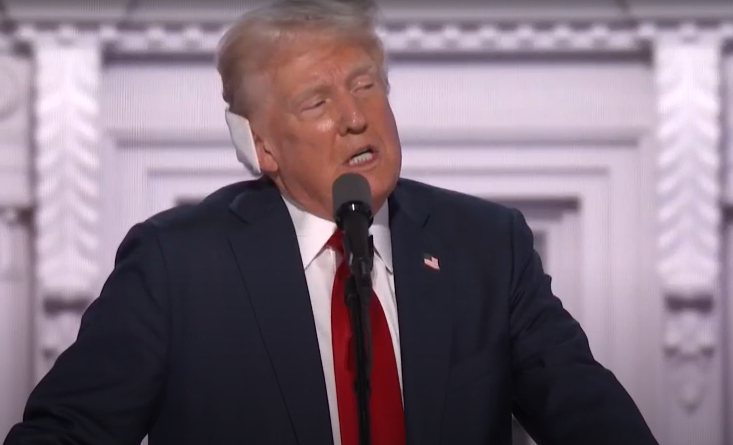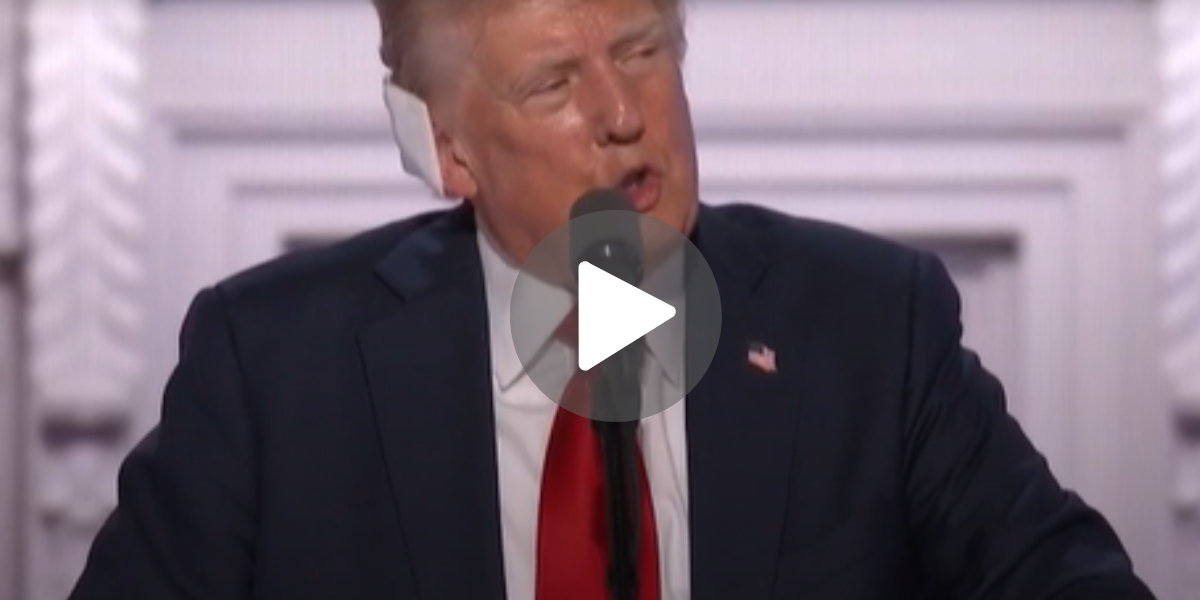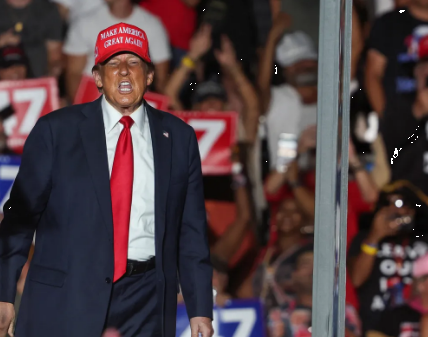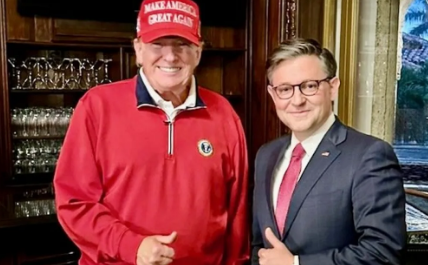The former president dramatically retold the story of Saturday’s assassination attempt before ad-libbing through a long speech and engaging with supporters.

MILWAUKEE — Donald Trump on Thursday night formally accepted the Republican Party’s presidential nomination in a speech heavy with references to the shooting he survived last week and elongated by ad-libbed applause lines and riffs — capping a long-anticipated moment that came only after a winding and dramatic campaign.
Trump, now the first major-party presidential nominee who has been convicted of felonies, took the stage days after a 20-year-old gunman nearly assassinated him during a rally in Pennsylvania, firing a bullet that clipped his right ear and left it bloodied. He wore a white square bandage over his wounded ear throughout the convention, with some attendees wearing their own in solidarity during the weeklong event.
“Let me begin this evening by expressing my gratitude to the American people for your outpouring of love and support following the assassination attempt at my rally on Saturday,” Trump said near the start of the 93-minute speech. “As you already know, the assassin’s bullet came within a quarter of an inch of taking my life.”
The shooter injured two other people and killed rallygoer Corey Comperatore, a former fire chief from the region. Trump held a moment of silence for him during his speech. Comperatore’s firefighter jacket and helmet were placed on display during his remarks, and Trump called him “a fine man” to cheers, walking over to kiss his gear.
While Trump is known for his off-the-cuff public remarks and social media posts, he has given highly planned convention speeches in the past. Thursday’s speech started that way, but he soon detoured to give lengthy thanks to the speakers and attendees and then to engage the crowd with asides, impressions and sometimes hard-to-follow deviations.
His speech as written could have come from any number of Republicans, but the way Trump delivered it was similar to his usual patter at his rallies — an unchanged style after he and allies spoke all week about how the shooting had changed him.
Still, the speechwriting process was upended at the last minute by the assassination attempt, which dominated the opening parts of Trump’s remarks.

“We must not criminalize dissent or demonize political disagreement,” Trump said in his convention speech. “In that spirit, the Democrat Party should immediately stop weaponizing the justice system and labeling their political opponents as an enemy of democracy, especially since that is not true. In fact, I am the one saving democracy for the people of our country.”
Trump used the second half of his speech to highlight deep policy differences between him and Biden on issues from immigration to energy policy to the economy.
“I will end the devastating inflation crisis immediately, bring down interest rates and lower the cost of energy. We will drill, baby, drill, which will lead to a large-scale decline in prices,” he said.
Trump spoke about his policy priorities in sweeping terms without delving into many specifics, but his speech stepped through his top-tier policy priorities for years, including tax cuts, immigration, foreign policy and the economy. He put a special focus on high levels of inflation that have dogged Biden for much of his time in office.
“We have an inflation crisis that is making life unaffordable, ravaging the income of working and low-income families and crushing, just simply crushing, our people,” he said.
In recent months, inflation has cooled, and during Biden’s time in office, 15 million new jobs have been created, more than during the Trump administration. But the rise in prices and other issues mean the economy has remained one of Republicans’ most effective lines of attack.

Trump said the nation has an “illegal immigration crisis” and pledged to “launch the largest deportation operation in the history of our country” as he recounted examples of undocumented migrants committing crimes. During his time in office, Trump instituted a “stay in Mexico” policy, which required asylum-seekers to stay in Mexico while waiting for an immigration hearing. After a legal fight, Biden ended the policy, and Trump has said he would bring it back.
The former president has also long advocated for a more isolationist foreign policy platform, limiting America’s footprint in other parts of the world. It’s part of what he has dubbed his “America First” agenda, which broadly focuses on more domestic spending and sending fewer taxpayer dollars overseas.
“War is now raging in Europe and the Middle East, a growing specter of conflict hags over Taiwan, Korea, the Philippines, and all of Asia, and our planet is teetering on the edge of World War III,” Trump said.
Democrats have framed the election as not just another presidential contest but as a fight for the future of democracy. They have argued that, because Trump wants to replace longtime non-political federal workers with his political allies and expand the power of the presidency, that his return to the White House would drastically remake U.S. institutions.
“He failed to mention how he had inflicted pain and cruelty on the women of America by overturning Roe v Wade,” Biden campaign chair Jen O’Malley Dillon said in a statement. “He failed to mention his plan to take over the civil service and to pardon the January 6th insurrectionists.”
And Trump’s speech came amid a Democratic effort to push aside Biden after a lackluster debate performance and several gaffes shined a bright spotlight on the incumbent’s age and abilities.
Trump framed the election as a course correction.
“With proper leadership, every disaster we are now enduring will be fixed, and it will be fixed very, very quickly,” he said.




